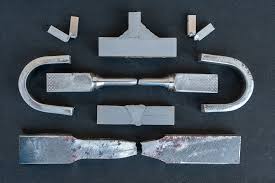TechBullion
3d
84

Image Credit: TechBullion
Tensile Test Failures Often Start with Bad Sample Preparation – Here’s Why
- ASTM studies reveal that over 60% of failures in tensile testing can be attributed to poor sample preparation, leading to inaccurate results and potential audit failures.
- Errors in dimensions, surface quality, and internal defects can cause early breakage, false readings, and non-repeatable test outcomes.
- Proper sample preparation, adherence to standards like ASTM E8 and ISO 6892-1, along with regular equipment calibrations, is crucial for accurate and reliable tensile testing.
- Issues like uneven stress distribution, surface imperfections, and internal flaws in samples can result in unexpected failures and invalid test data.
- Accurate cutting, shaping, and finishing of specimens with calibrated equipment is essential to prevent errors before testing even begins.
- Improper fixturing and handling can introduce bending or misalignment, impacting the accuracy of test results.
- Following documented procedures, international standards, and maintaining cleanliness during preparation are vital in accredited laboratory settings.
- Investing in internal tensile sample preparation tools improves efficiency, reduces costs, and ensures consistent quality control.
- Having in-house preparation systems enhances operational flexibility, minimizes sample damage risks, and guarantees accurate, repeatable results.
- By considering factors like testing frequency, batch sizes, and logistics costs, labs can use ROI calculators to determine the benefits of in-house preparation.
- Treating sample preparation as a critical aspect of testing enhances data quality, reduces retesting needs, and upholds the credibility of test results in accredited environments.
Read Full Article
5 Likes
For uninterrupted reading, download the app